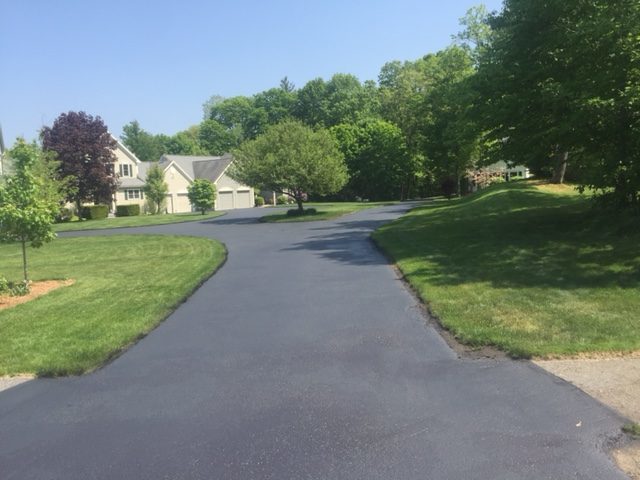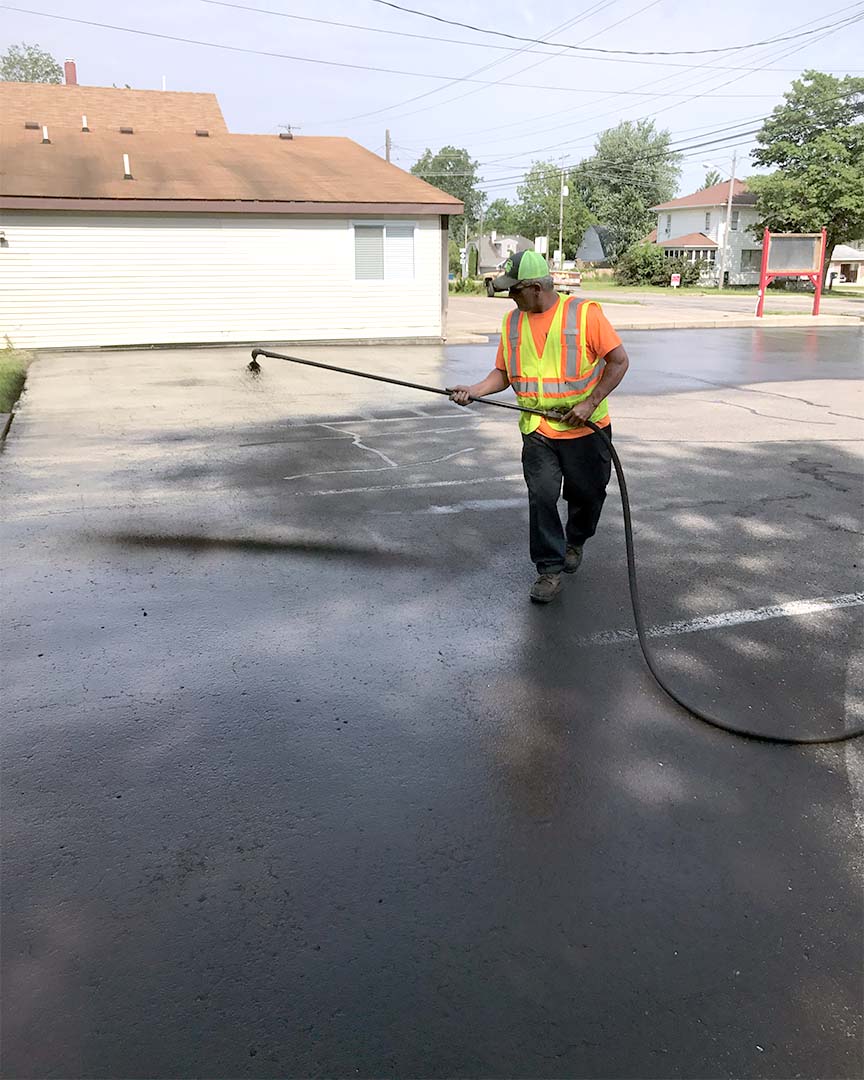Elevate Safety And Security and Charm: Angled Parking Lot Solutions with Asphalt Sealing
Elevate Safety And Security and Charm: Angled Parking Lot Solutions with Asphalt Sealing
Blog Article
Hot Mix Asphalt: A Lasting Option for Sidewalk
Warm Mix Asphalt (HMA) has actually arised as a leading lasting choice for sidewalk options, using a myriad of ingenious modern technologies and ecological benefits. As the demand for environmentally friendly construction practices expands, checking out the nuances of HMA's sustainability can provide useful understandings into the future of sidewalk services.
Ecological Benefits of Warm Mix Asphalt

In Addition, Warm Mix Asphalt aids to minimize metropolitan warmth island effects. Its dark color takes in sunlight, decreasing the quantity of heat reflected back right into the ambience compared to lighter-colored sidewalks. This can reduce ambient temperature levels in city locations, decreasing the demand for air conditioning and ultimately reducing energy usage.
Furthermore, Warm Mix Asphalt adds to improved stormwater management. Its porous nature allows water to penetrate the pavement and recharge groundwater supplies, reducing drainage and the danger of flooding. These environmental benefits make Hot Mix Asphalt a lasting choice for leading highways and roads.
Power Performance in HMA Production
Is power effectiveness a vital factor in the manufacturing of Warm Mix Asphalt (HMA)? Absolutely. Power plays a considerable duty in the production of HMA, affecting both cost and environmental sustainability. One key element of energy effectiveness in HMA manufacturing is making use of cozy mix asphalt (WMA) innovations (angled parking). WMA allows for the blending and positioning of asphalt at lower temperature levels compared to conventional warm mix asphalt, leading to minimized power consumption throughout manufacturing. This process not just lowers gas usage yet likewise lowers greenhouse gas exhausts, making it an extra eco-friendly choice.
Additionally, innovations in plant innovations have caused even more energy-efficient HMA production processes. Modern plants are designed with functions like recycled asphalt pavement (RAP) handling abilities, effective burner systems, and boosted insulation, all adding to power savings. By maximizing energy usage in HMA production, the sector can decrease its carbon footprint while keeping high-quality sidewalk materials. Energy efficiency is, as a result, a critical consideration in making sure the sustainability of Warm Mix Asphalt manufacturing.
Recyclability of Hot Mix Asphalt
The recyclability of Hot Mix Asphalt (HMA) is a pivotal aspect of its sustainability and lasting ecological influence. HMA is among one of the most recycled materials in the United States, with over 100 million tons of recovered asphalt sidewalk (RAP) being recycled every year in new pavement construction. Recycling HMA uses a number of environmental benefits, such as reducing the demand for virgin products, decreasing power usage throughout manufacturing, and lowering the quantity of waste sent to garbage dumps.
The process of recycling HMA entails grating the existing pavement, crushing it into smaller sized items, and blending it with brand-new accumulation and asphalt binder to create a recycled mix. On the whole, the recyclability of HMA plays a substantial duty in advertising lasting practices within the sidewalk industry.

Long-Term Efficiency of HMA
Asphalt pavements demonstrate sturdiness and durability over an extensive period, mirroring the long-term performance of Warm Mix Asphalt (HMA) The longevity of HMA can be attributed to its Recommended Reading capability to endure hefty traffic loads, extreme climate condition, and the impacts of aging. Research studies have revealed that properly designed and appropriately built HMA pavements can last for twenty years or even more with normal upkeep. The secret to making the most of the long-term efficiency of HMA depends on utilizing high-quality products, complying with best methods in construction, and executing reliable maintenance approaches. Correct drain, regular assessments, and prompt repairs are crucial for preserving the architectural honesty of HMA pavements in time. Furthermore, improvements in HMA technology, such as the usage of polymer-modified binders and warm mix asphalt, have further enhanced the durability and long life of HMA sidewalks. By prioritizing quality construction and upkeep techniques, HMA remains to verify itself as a cost-effective and lasting solution for resilient pavement infrastructure.

HMA: Longevity and Sustainability
Showing both toughness and sustainability, Warm Mix Asphalt (HMA) has come to be a foundation in the building and construction of resilient pavement frameworks - hot mix asphalt. HMA's sturdiness comes from its ability to hold up against hefty tons, harsh weather condition conditions, and high web traffic volumes, making it a reputable option for roads, freeways, and flight terminal runways. The make-up of HMA, which usually includes aggregates, binder, and filler, plays an essential role in enhancing its longevity and resistance to damage
Moreover, HMA's sustainability hinges on its recyclability and energy-efficient manufacturing procedure. The ability to recycle recovered asphalt pavement (RAP) in brand-new HMA blends reduces the demand for virgin products and reduces the environmental effect of sidewalk building and maintenance. Furthermore, the energy efficiency of producing HMA depends on its reduced blending temperature levels compared to various other sidewalk products, causing minimized energy consumption and greenhouse gas exhausts.
Final Thought
In final thought, hot mix asphalt (HMA) provides a sustainable service for sidewalk with its environmentally pleasant characteristics. HMA's recyclability, energy effectiveness in manufacturing, and long-lasting toughness make it an environmentally friendly option for roadway building.
HMA is one of the most recycled materials in the United States, with over 100 million loads of redeemed asphalt pavement (RAP) being recycled each year in brand-new sidewalk building.The process of reusing HMA involves milling the existing pavement, crushing it into smaller items, and blending it with new aggregate and asphalt binder to produce a recycled mix.Asphalt pavements demonstrate resilience click now and strength read this article over an extended duration, showing the long-term efficiency of Hot Mix Asphalt (HMA) In addition, innovations in HMA innovation, such as the use of polymer-modified binders and cozy mix asphalt, have better boosted the toughness and long life of HMA pavements. The capability to reuse redeemed asphalt sidewalk (RAP) in brand-new HMA blends reduces the need for virgin materials and minimizes the environmental effect of sidewalk building and construction and upkeep.
Report this page